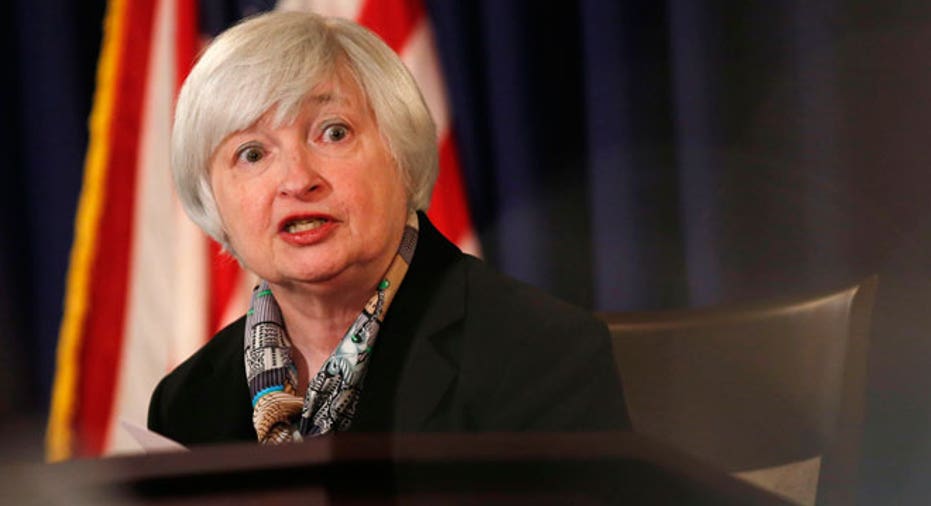Yellen Moves Markets in First Press Conference

Federal Reserve Chair Janet Yellen, in her first press conference since taking the helm of the U.S. central bank, sent stock markets plunging Wednesday when she said the Fed might start raising interest rates six months after ending its bond purchasing program.
The Dow Jones Industrial average hit an intraday low -- down about 210 points -- shortly after Yellen made her comment around 3 p.m.
The Dow regained much of those losses, but markets seemed surprised at Yellen’s specificity.
Earlier, the policy setting Federal Open Market Committee voted to reduce the Fed’s asset purchases to $55 billion per month, cutting $10 billion from its bond-buying program for the third time in as many meetings.
The move was widely expected.
The Fed also changed its guidance for when it may start to increase its short-term federal funds interest rate, which is a benchmark for many consumer and business loans.
With the unemployment rate nearing 6.5%, the FOMC removed that threshold for when it may begin to raise the target rate.
“In determining how long to maintain the current 0 to ¼ percent target range for the federal funds rate, the Committee will assess progress – both realized and expected – toward its objectives of maximum employment and 2% inflation,” the FOMC said in its statement. “This assessment will take into account a wide range of information, including measures of labor market conditions, indicators of inflation pressures and inflation expectations, and readings on financial developments.
The shift away from the unemployment rate as a primary indicator to a broader array of indicators was also widely predicted.
In her press conference, Yellen said she has never considered the headline unemployment rate alone as a “sufficient” gauge for the health of the overall labor markets. Instead, she said she looks at other labor indicators as well, including the broader U6 rate, which includes people not currently looking for work, and the labor participation rate.
“It’s appropriate to look at many more things,” she said.
The Fed had previously said it would begin to raise the fed fund rate “well past” the time unemployment falls to 6.5%. Though with the unemployment rate now near that level, the Fed said it would be appropriate to maintain its historically low rate “for a considerable time after the asset program ends” and even as “employment and inflation are near mandate-consistent levels, economic conditions may, for some time, warrant (it).”
As for its asset purchases, beginning in April, the Fed will buy $25 billion of agency mortgage-backed securities and $30 billion of longer-term Treasury securities.
After concluding its two-day meeting, the Fed also tweaked its economic forecasts. It now expects the unemployment rate this year to settle between 6.1% and 6.3%, gross domestic product to increase between 2.8% and 3%, and longer-run inflation to rise at 2%.
In December, the Fed forecast the unemployment rate for this year would fall between 6.3% and 6.6%, with an increase in GDP between 2.8% and 3.2%. Its longer-run inflation forecast is unchanged.
The FOMC also acknowledged the role severe weather had on the economy, noting “growth in economic activity slowed during the winter months, in part reflecting adverse weather conditions."
Narayana Kocherlakota, the president of the Federal Reserve Bank of Minneapolis, voted against the policy over concerns the Fed is not committed to its 2% inflation target.
Yellen said in her press conference that the Fed is “closely monitoring” the situation in the Ukraine, but that U.S. financial interests haven’t been significantly impacted yet by the situation brought about by Russia’s aggressive push to annex the Crimea.



















